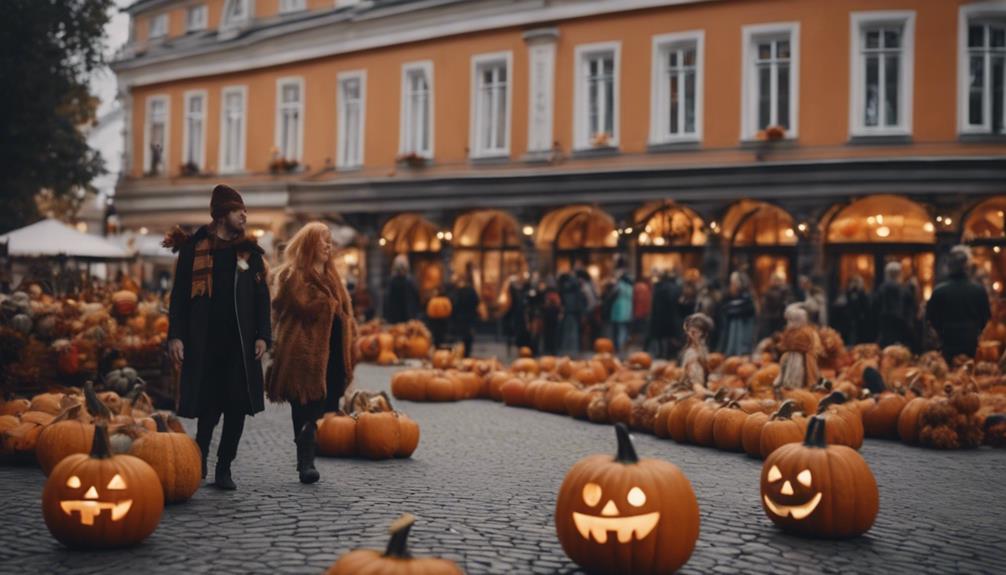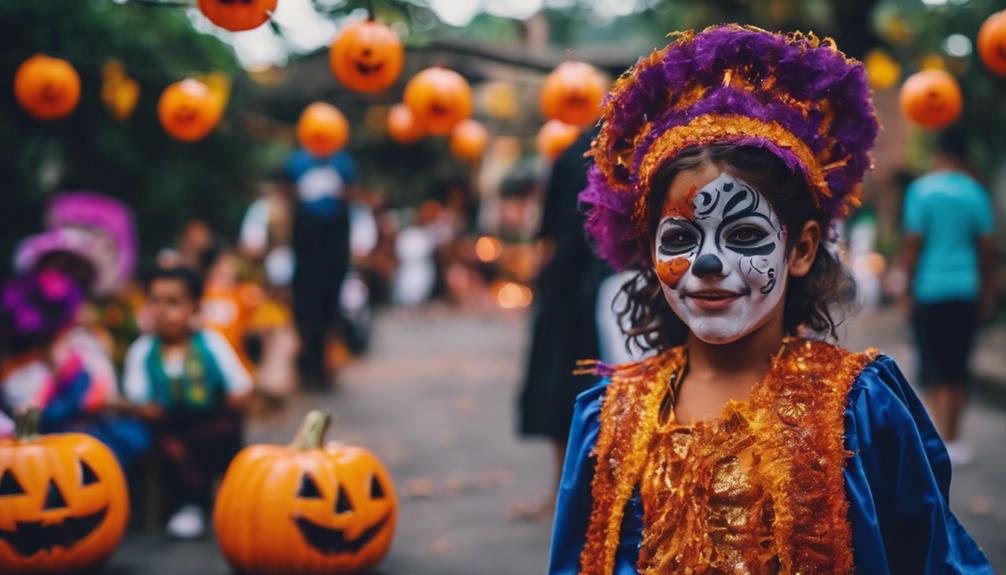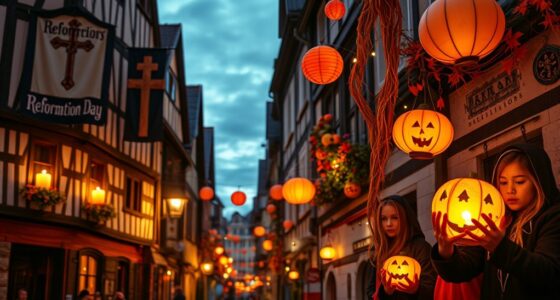Germans have increasingly embraced Halloween traditions, with the holiday firmly establishing itself in the country by the late 1990s and now generating over 320 million euros annually. The younger generation particularly enjoys Halloween, with themed parties and events common in cities like Berlin. Traditional customs involve creepy outfits, unique trick-or-treating called 'Süßes oder Saures,' and themed snacks like hot apple punch. Modern trends include vibrant urban parties, creative decorations, and a blend of old customs with contemporary elements. Halloween in Germany blends old and new, sparking debates similar to Valentine's Day. Embrace the unique blend of customs for a memorable experience.
Key Takeaways
- Halloween in Germany is widely embraced, especially by the younger generation.
- Traditional customs like 'Süßes oder Saures' and themed parties are popular.
- Modern trends include vibrant parties, magazines showcasing costume ideas, and unique decorations.
- Blend of old and new customs creates a recognized and embraced holiday.
- Celebrations cater to different preferences, offering a mix of traditional and contemporary elements.
History of Halloween in Germany
Introducing Halloween to Germany in 1991, Dieter Tschorn had a strategic goal in mind – boosting toy sales. Little did he know that his initiative would mark the beginning of a significant shift in German holiday traditions. With his 1994 press release, Tschorn inadvertently set in motion the popularization of Halloween in the country. What started as a marketing tactic soon evolved into a full-fledged holiday embraced by Germans across the nation.
In the years following Tschorn's introduction of Halloween, the holiday began to take root in German culture. By the late 1990s, Halloween had firmly established itself as a popular and widely celebrated occasion. Today, Halloween in Germany isn't just a symbol of commercial success but also a cherished tradition for many. The holiday has become a key sales period, generating over 320 million euros annually and ranking as the third highest sales holiday in the country. The history of Halloween in Germany is a demonstration of how a simple marketing ploy can transform into a beloved cultural phenomenon.
German Halloween Celebrations Today
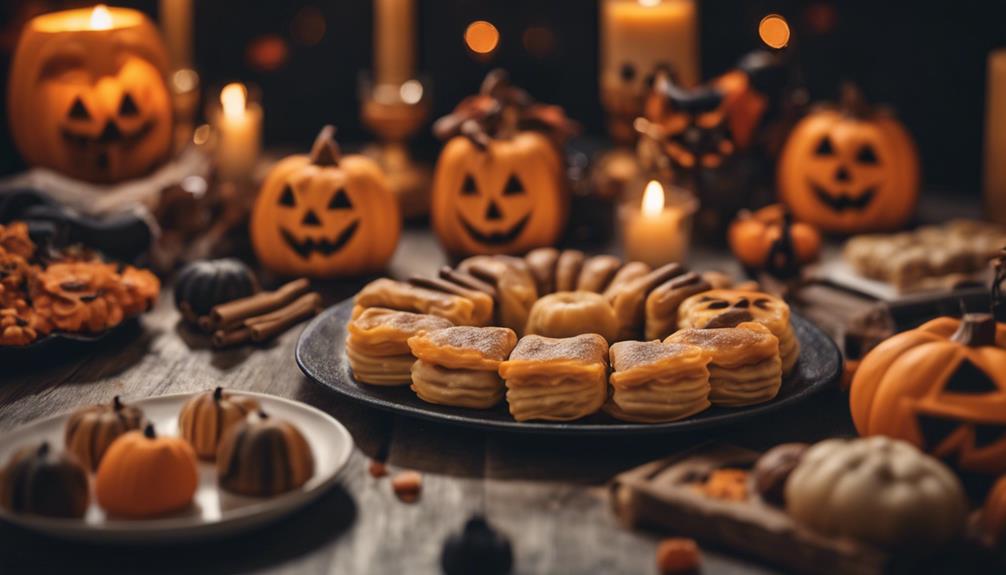
German Halloween celebrations today showcase a growing trend of popularity, particularly among the younger generation. In cities like Berlin, Halloween parties and events have become common, with many individuals embracing the spooky holiday spirit by dressing up in themed costumes.
While trick-or-treating isn't as prevalent in Germany, the focus has shifted towards elaborate and eerie gatherings. Germans often opt for creepy and gruesome outfits rather than traditional or sexy attire, adding to the overall spooky atmosphere of the celebrations.
Halloween in Germany has evolved into a recognized holiday, with themed snacks, drinks, and traditional dishes being enjoyed at these festive gatherings. The younger generation, in particular, has embraced the Halloween traditions with enthusiasm, making it a popular occasion for socializing and having fun.
The allure of themed parties and the opportunity to showcase creative costumes have contributed to the increasing popularity of Halloween among Germans, creating a vibrant and spirited atmosphere during this holiday.
Traditional German Halloween Customs
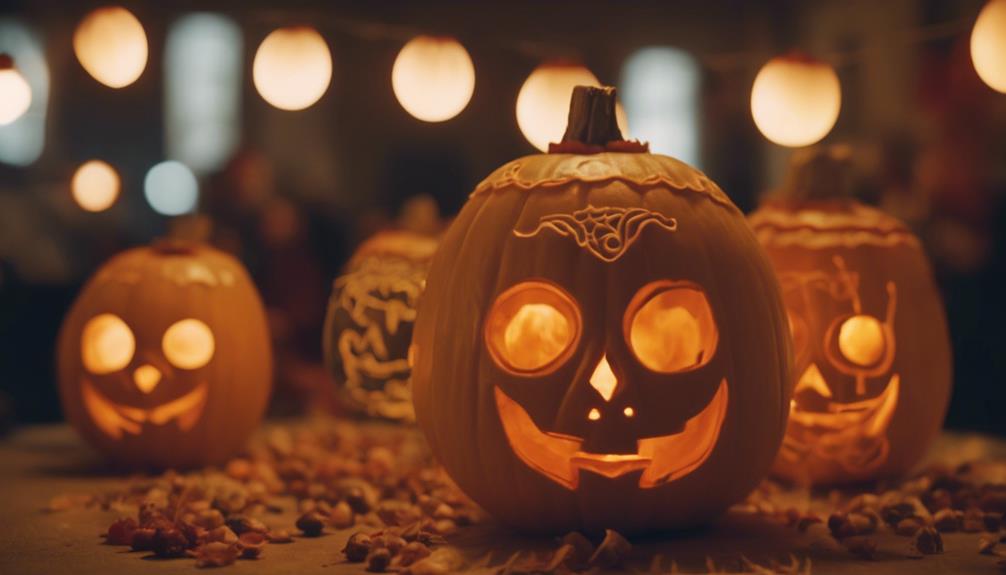
Embrace the eerie and time-honored customs of Halloween in Germany by delving into the rich tapestry of traditional festivities and rituals. When it comes to Halloween costumes in Germany, expect to see a preference for creepy and gruesome outfits over more conventional or alluring choices. This inclination towards the macabre is influenced by the country's Karneval traditions, which often feature elaborate and sometimes eerie costumes.
Instead of the typical trick-or-treating, Germans have their own version called 'Süßes oder Saures' (Sweets or sours), where children go from house to house asking for treats. Halloween parties in Germany are popular, especially among the younger crowd, with themed events in clubs and private gatherings. These festivities usually feature traditional German dishes like pumpkin soup, along with themed snacks and drinks such as hot apple punch.
Modern Halloween Trends in Germany
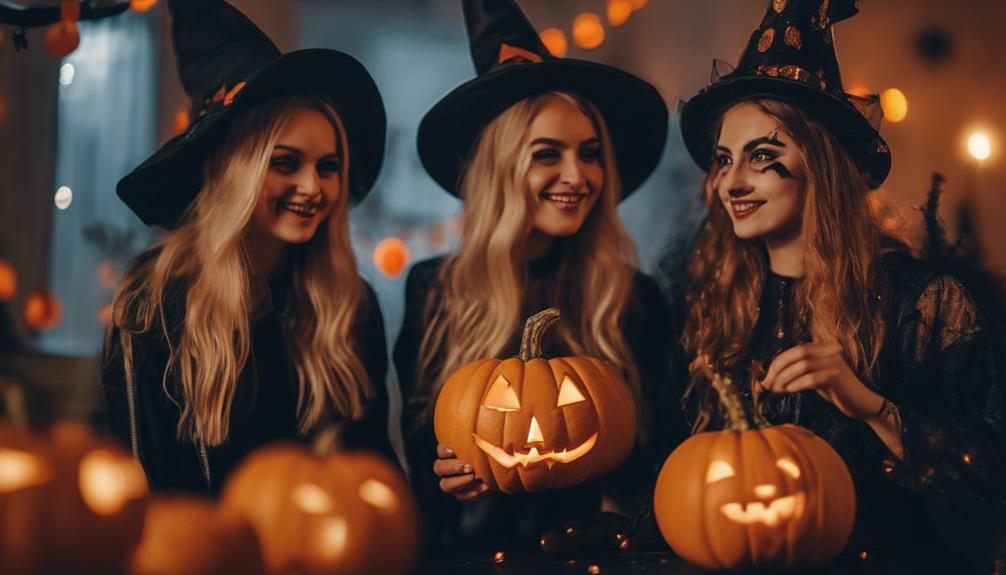
As Halloween gained traction in Germany, modern trends have emerged, shaping the way this spooky holiday is celebrated across the country. Halloween in Germany has evolved to include a variety of modern elements, from themed events and parties to unique costume inspirations and decorations. The influence of German culture can be seen in the way Halloween is celebrated, with a blend of traditional customs and contemporary trends.
To give you a glimpse into the modern Halloween trends in Germany, here is a table highlighting some key aspects:
| Modern Halloween Trends in Germany | Examples |
|---|---|
| Halloween Parties | Urban areas like Berlin host vibrant Halloween parties and events. |
| Costume Inspirations | German magazines showcase Halloween-themed costume ideas and inspirations. |
| Halloween Decorations | Unique and creative decorations are used to set the spooky Halloween ambiance. |
These trends demonstrate how Halloween has become a recognized and embraced holiday in Germany, with a blend of traditional festivities and modern influences.
Cultural Significance of Halloween in Germany
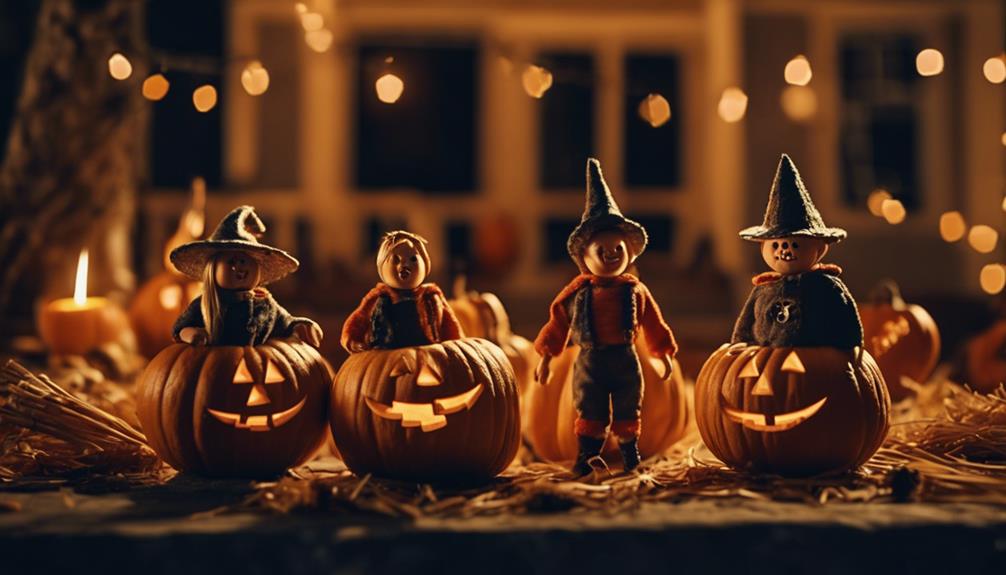
With its origins rooted in Celtic traditions and a growing acceptance among the younger generation, Halloween in Germany has acquired a multifaceted cultural significance. The celebration of Halloween in Germany intertwines various elements that reflect the country's historical, religious, and commercial influences, shaping the way it's perceived and celebrated by different groups. Here are three key aspects to ponder:
- Blend of Old and New: The incorporation of Halloween into Germany's calendar alongside traditional holidays like Reformation Day and St. Martin's Day creates a unique blend of old customs and modern festivities, showcasing a cultural evolution that resonates with diverse segments of the population.
- Commercialization Debate: The commercialization of Halloween in Germany has sparked discussions about its cultural significance, with some viewing it as a commercialized holiday akin to Valentine's Day. This debate highlights the ongoing tension between maintaining traditions and embracing new cultural imports.
- Themed Events and Unique Traditions: Despite initial skepticism, Halloween has found its place in German culture, with themed events, parties, and unique traditions emerging across the country. These celebrations cater to different preferences, offering a range of experiences for both locals and visitors to enjoy.
Frequently Asked Questions
Do Germans Celebrate Halloween?
In Germany, Halloween has gained popularity, especially among the younger population. Halloween was introduced in the 1990s, gradually becoming more accepted. Some Germans see it as a commercialized holiday, similar to Valentine's Day.
Halloween parties and themed events are common, offering a festive way to celebrate. While trick-or-treating is less common, the focus remains on gatherings and parties.
Is Trick-Or-Treating Common in Germany?
Trick-or-treating is less common in Germany compared to North America. In metropolitan areas like Berlin, children may go door-to-door on Halloween seeking treats. However, the traditional St. Martinstag celebration, which follows Halloween, provides an alternative to trick-or-treating.
Children in Germany say 'Süßes oder Saures' (Sweets or sours) instead of the traditional trick-or-treat phrase. During St. Martinstag, children are rewarded with baked goods and sweets for participating in this long-standing tradition.
Is Halloween a National Holiday in Germany?
In Germany, Halloween isn't a national holiday. Reformation Day on October 31st takes precedence in some states, leading to varied celebrations.
The German government doesn't officially recognize Halloween as a national holiday. The popularity of Halloween varies across different regions in Germany.
While not a national holiday, some Germans do embrace Halloween traditions, with festivities and events held in certain areas to mark the occasion.
What Do Germans Hide During Halloween?
During Halloween, Germans hide various items to enhance the festive spirit. Small gourds or pumpkins are often tucked away in homes as decorations.
Spooky elements like fake spiders and cobwebs might be discreetly placed. Hidden treats like chocolates and candies are a common surprise.
Costumes and masks could be stashed until Halloween events. In addition, Halloween-themed games or activities may be covertly concealed for children to discover and enjoy.
Conclusion
To sum up, while Halloween has gained popularity in Germany in recent years, traditional customs still hold strong roots in the country. As Germans embrace the spooky holiday with pumpkin carving and costume parties, the cultural significance of Halloween continues to evolve.
Just like the changing leaves of autumn, Halloween traditions in Germany are a blend of old and new, creating a vibrant tapestry of celebration that reflects the country's rich history and modern influences.
